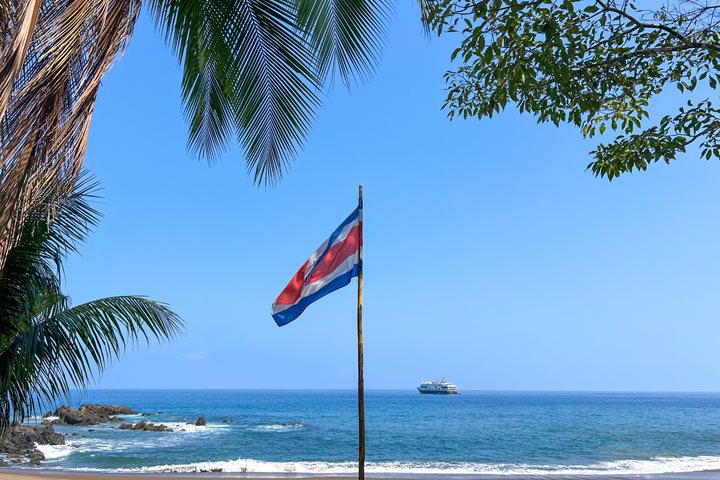On our last day in Costa Rica, we disembarked onto the western side of the Golfo Dulce – Sweet Gulf – in Playa Blanca. Much of today is about cultural exchange between local families and learning about the ecofriendly operations they lead. We had many locations, projects, and themes to choose from this afternoon. The assortment of tours included opportunities to learn about sugar cane, gold panning, hearts of palm, cacao/chocolate, hiking the tropical trails or remaining at the beachfront for water activities.
Walk into a world apart from yours, and you begin to ask questions you’d never gave much thought: Who knew where chocolate actually comes from? Who knew exactly how to harvest hearts of palm? Who remembers eating sugarcane syrup with pancakes or bread?
We went into the woods behind and below the Cubillo family’s home to find the small and narrow creek where he, Don Juan, used to harvest the gold. A very difficult and exhausting job, Don Juan shared that with the help of Lindblad and our voyaging, he no longer has to pan. And he has several important insights to share because of this: a dignified life can come from any direction and distance, that one can always change for the better, and that stewardship is perhaps our highest ideal.
Visiting the Sugar Cane Mill called “El Trapiche de don Carmen,” the family had prepared for us the very traditional and very sweet candy known locally as “sobado.” The sobado candy is made with very hot, bubbly molasses to which one typically adds powdered milk (for creaminess) and extra additions such as peanuts. To make it more ecofriendly, instead of plastic or even paper napkins, they served it to us on banana leaves plates.
Part of the sugar cane “trapiche” family posed for us – Mrs. Noemi and her daughter – showcasing the wooden mold with which they shape the famous “tapas de dulce” or panelas or sugar cane patties. These patties are necessary element in most highland Costa Rican kitchens to make the very popular “agua dulce” drink, perfect for a cold highland evening.
Traditional of the Costa Rican cooking, the Corona metal grinders were once used to grind different ingredients of the tico cuisine. A more modernized use includes the grinding the cocoa beans to extract the highly appreciated cocoa liquor and butter.
Spotting animals within the tropical Rainforest trails indeed has a lot to do with the skill of the guides and their understanding of the individual species. Knowing where they prefer to perch, what they prefer to eat, and what time of the day they are active or dormant can completely change the experience of our guests.
For those of us who get kicks watching birds, the little orange-collared manakin several guests saw may have made our day. Found only and exclusively in the south Pacific side of Costa Rica, this beautiful male decided he’d be generous with his time and allow for several minutes of photos and observation.









